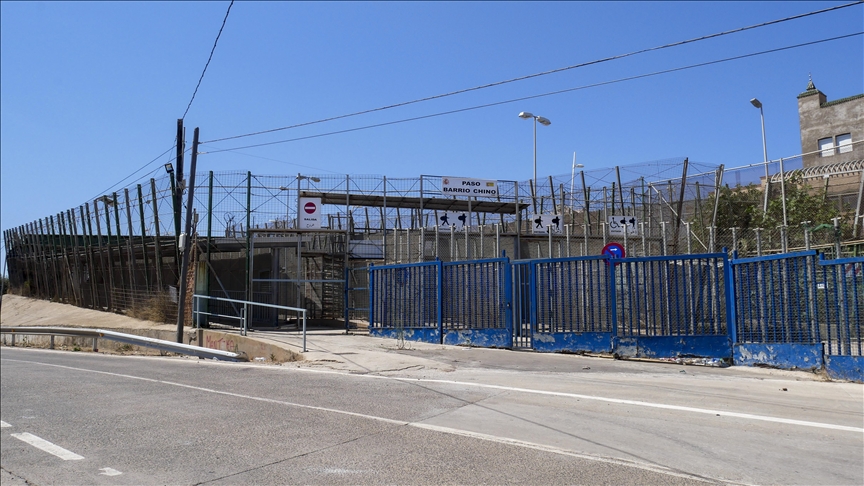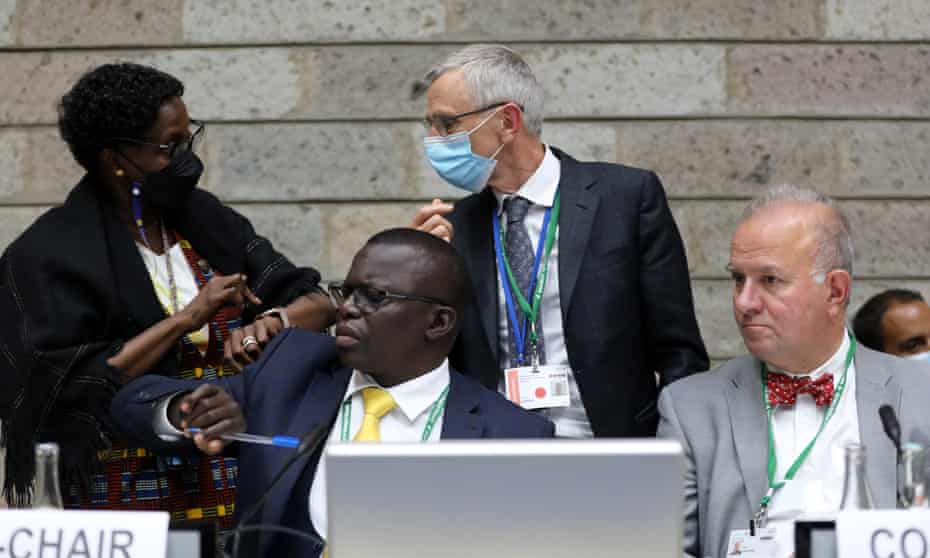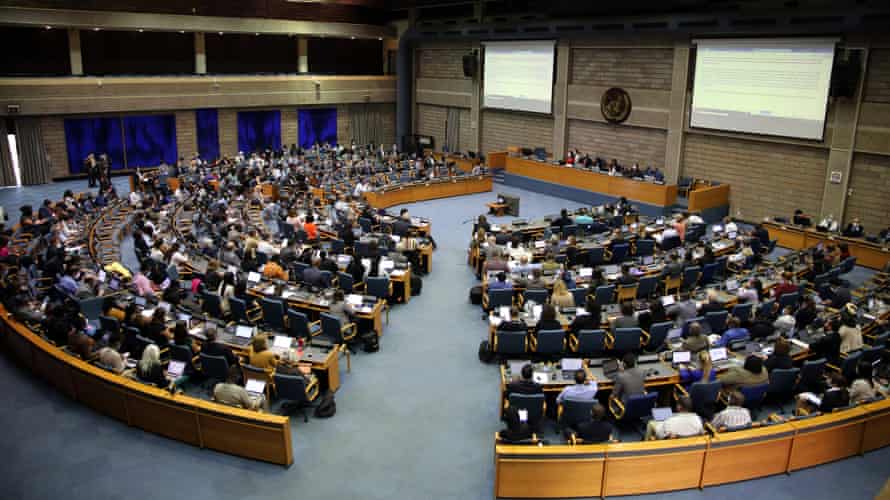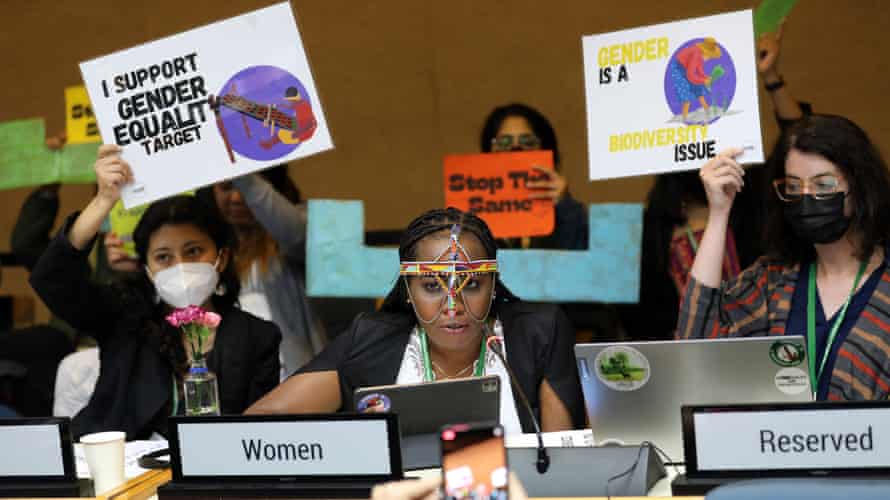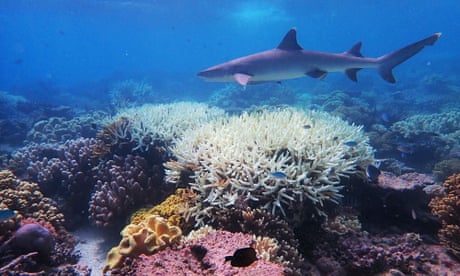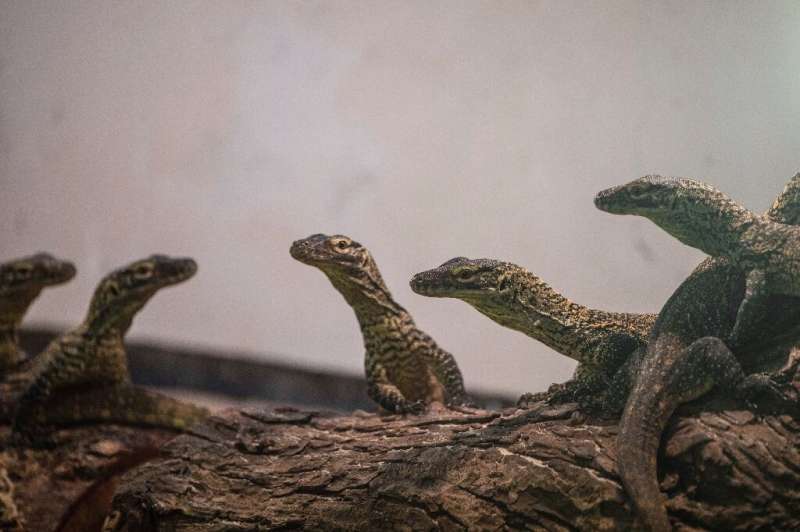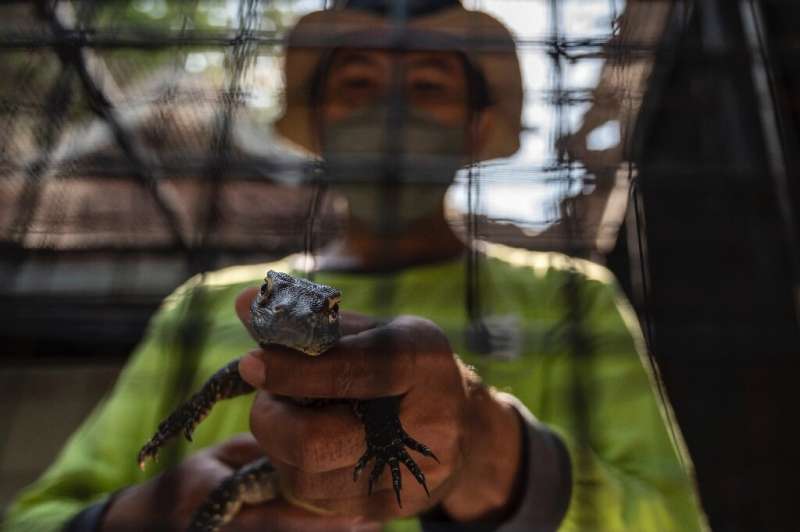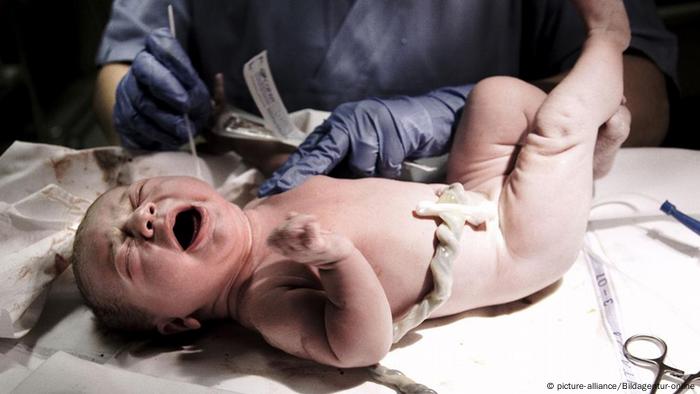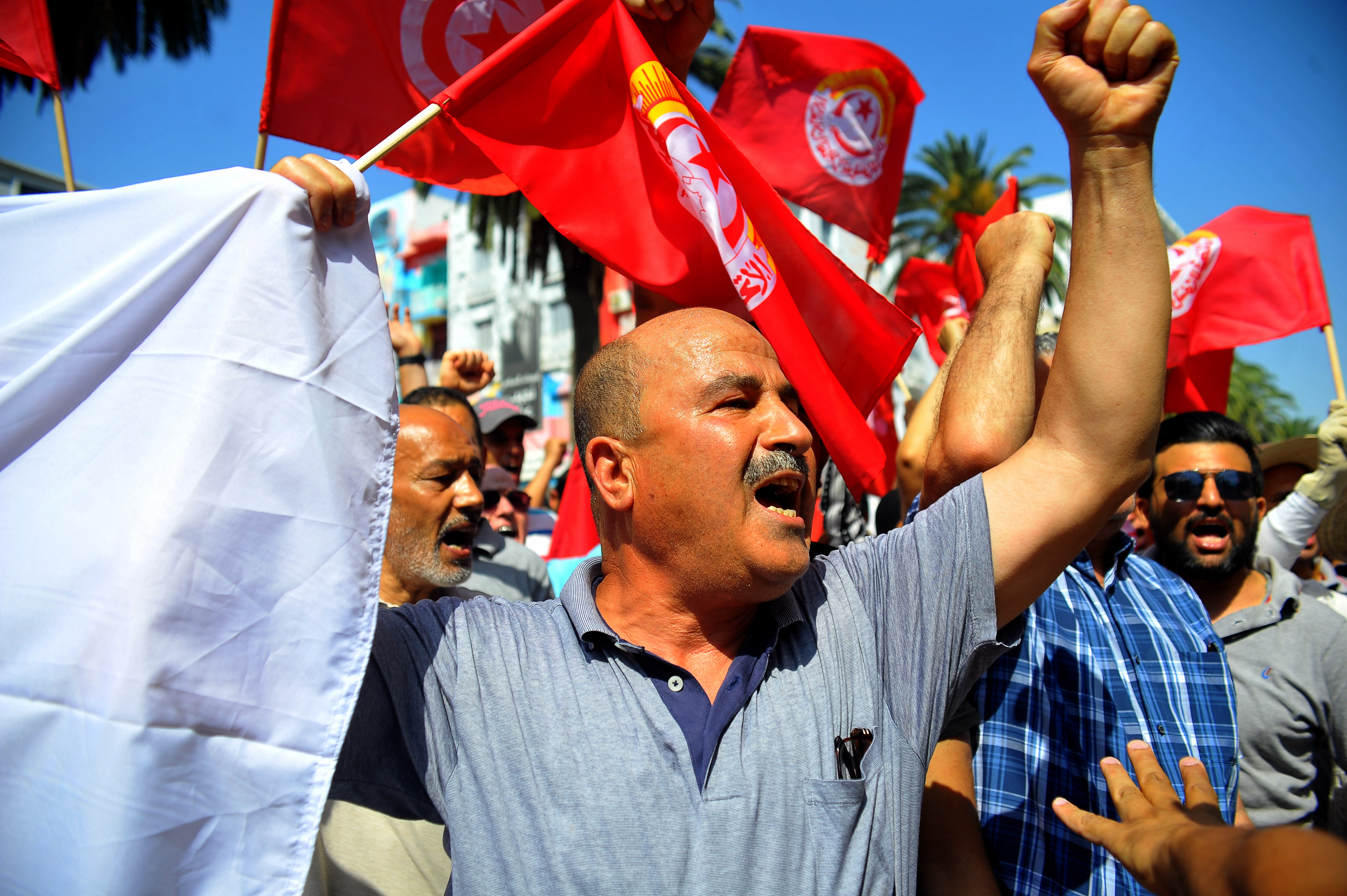
How Tunisia's trade unions became Kais Saied's most powerful opponent
Alessandra Bajec
28 June, 2022
In-depth: A nationwide strike in June saw Tunisia grind to a standstill as the country's largest trade union continues to challenge IMF-linked austerity measures and the president's concentration of powers.
A national strike staged by a Tunisian labour union this month signals strong mobilisation potential in the face of the government's economic reform plan and President Kais Saied’s non-inclusive dialogue.
The general strike held by Tunisia’s largest trade union (UGTT) on 16 June, which saw over 96 percent of public employees from 159 state institutions and public companies halting work nationwide, was a test for president Saied after the UGTT’s rejection of a reform package announced by his government.
The strike was in response to an austerity proposal to secure a major loan from the International Monetary Fund that included the freezing of salaries and jobs in the public sector, the lifting of subsidies, and the privatisation of state-owned firms.
The mass mobilisation protested the decision of Najla Bouden's cabinet not to increase public wages and to propose spending cuts, as well as to add pressure on the president, who’s taking steps to prepare a new constitution that will be put to a referendum on 25 July.
“The message directed at the head of state was that the union is a main stakeholder, and nothing will happen unless it is included in the process,” Tunisian economist Aram Belhadj told The New Arab.
"The UGTT's strike action is a huge challenge to Saied amid continued political and social turmoil, one of the largest crises the Tunisian leader has faced since he assumed full powers last July"
The day before the strike, the UGTT stated that public workers would walk out “to defend their economic and social rights” and denounced the deterioration of their living standards due to rampant inflation and declining purchasing power.
Serife Akinci, an expert on Middle East and African Economies Studies at the Center for Middle Eastern Studies (ORSAM), suggested that economic activity in Tunisia may be “disrupted” by more action in the near future if demands remain unheard, possibly threatening the country’s stability, which the head of state “won’t be able to ignore”.
The national strike aimed to pressure the president on wage increases and other social demands, coinciding with Tunisia’s negotiations with the IMF for a $4 billion loan.
Whether it will succeed in convincing the government to return to the negotiating table is an open question. Despite a last-minute discussion on 13 June between the powerful labour union and the ministry of social affairs, the parties failed to reach an agreement and the public-sector strike went ahead as planned three days later.
Riccardo Fabiani, North Africa project director for the International Crisis Group (ICG), observed that the crucial issue in the talks with the IMF is whether the Tunisian government can give guarantees.
“It’s unrealistic to expect an accord in the current context of crisis and tension, except if there’s a push from international actors [US or Europe] to unlock funding without requiring major conditions,” the political analyst told The New Arab, although he thinks such a scenario is hard to envision.
RELATED
Tunisia trapped between one-man rule and economic woes
Analysis
Alessandra Bajec
Belhadj pointed out that given Tunisia’s failure to uphold its obligations in the past the IMF is now demanding a consensual agreement between the executive and the labour union along with other requirements.
In his view, the formal negotiations for a rescue plan, which the IMF is ready to begin in the coming weeks, will pass through “further complications” even if a deal is signed as, he argued, the union will continue to oppose spending cuts.
The North African country has been in preliminary discussions with the global lender since the start of 2022 but progress seems to have stalled. It hopes to secure a badly needed deal - the third in a decade - to address the state’s massive budget deficit at 10% of GDP.
The UGTT’s strike action is a huge challenge to Saied amid continued political and social turmoil, one of the largest crises the Tunisian leader has faced since he assumed full powers last July.
The social mobilisation was inevitably political too, coming in the midst of heavy criticism against the head of state for excluding opposition forces from his ‘national dialogue’ to draft the new charter.
The million-member labour confederation had earlier refused to participate in the debate, which excludes the county’s main political parties and several civil society groups. The union’s secretary-general Noureddine Taboubi has repeatedly criticised Saied’s “unilateralism”, and demanded an inclusive dialogue.
While president Saied stays focused on his political project, accelerating his constitutional reform for what he has called a "new republic", Tunisians largely appear uninterested in his vision and more preoccupied with the collapsing economy and soaring food prices.
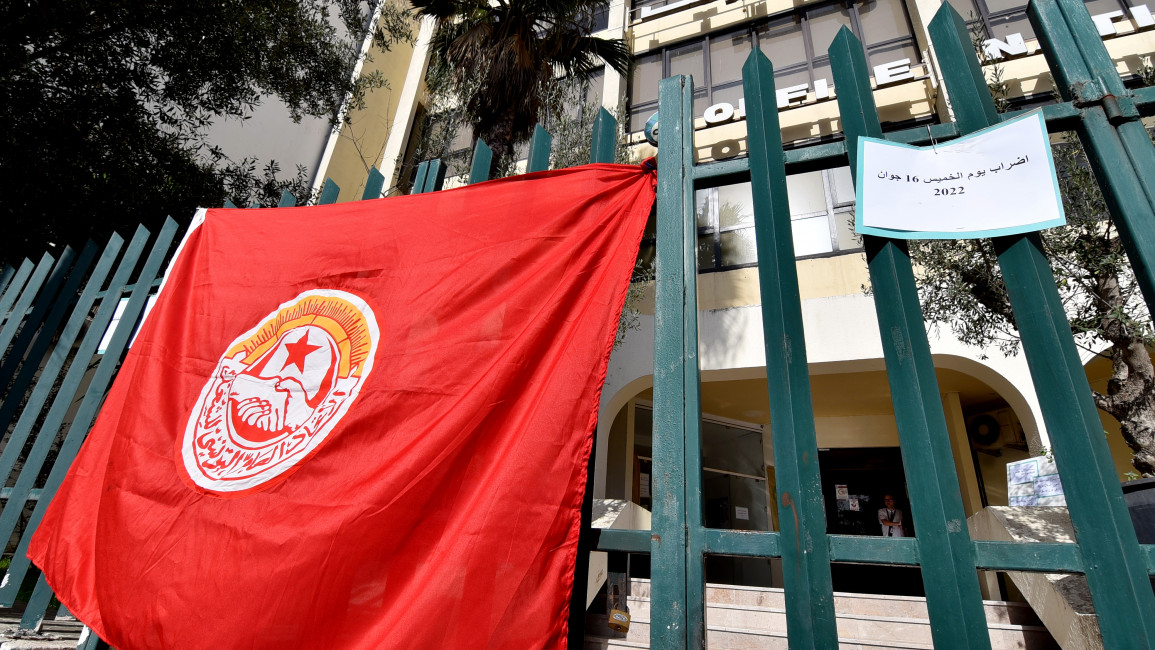
Less than 10 percent of Tunisian citizens took part in the national e-consultation on the new constitution. Critics say that Saied lacks an economic or social program to lead the country out of the current crisis.
For its part, the UGTT, a key actor in the debate on the transition and socio-economic reforms in Tunisia, has political leverage and the ability to mobilise the street and obstruct Saied. Added to that, it is very unlikely that the international lender will negotiate a bailout deal without its backing given that the IMF has made any new loan conditional on the trade union’s support for the government reform plan.
“Kais Saied’s room for manoeuvre for an agreement over a rescue package is very limited. It doesn’t seem possible for him to ignore a major player with veto power,” Akinci told The New Arab. She explained that bypassing the labour organisation would translate to a lack of consensus on economic reforms and undermine the chance to restore confidence among international creditors, causing talks with the IMF to reach a stalemate.
“Saied is aware that the UGTT is important to him at this point in time,” the MENA economist said. “He realises that concluding an accord with the union involvement would strengthen his credibility abroad and significantly increase the likelihood of an IMF funding arrangement”.
Yet, if the government or the president do not respond to the trade union’s pressure, she continued, larger strikes could follow adding a “new dimension” to the deepening political and economic crisis.
"It's unclear what the impact of the 16 June strike on Saied will be, but we can consider the UGTT's move a run-up to wider-scale mobilisation in the country, with different workers' groups joining"
The ORSAM specialist noted that such labour actions could potentially “bring the country's economy to a standstill”, which would in turn have negative repercussions on Tunisian lives and compromise the confidence of international donors.
Fabiani hinted that an eventual option for the UGTT could be choosing to apply its full political weight in future strike action, though he reiterated that union members appear to be more focused on fulfilling socio-economic objectives.
The ICG’s North Africa expert stressed that the president’s individualistic modus operandi is “detrimental” to dialogue with social partners as well as the possibility of an accord with the IMF, as he hardly makes any concessions and pays little attention to the country’s economic priorities.
“It’s unclear what the impact of the 16 June strike on Saied will be, but we can consider the UGTT’s move a run-up to wider-scale mobilisation in the country, with different workers’ groups joining,” the analyst maintained.
Discussing the union’s negotiating power, Fabiani contended that the UGTT carries less influence in today’s context of no-dialogue with the presidency, whereas its mobilisation is more widespread and participative than in the past given mounting frustration with the country’s worsening outlook.
RELATED
Kais Saied sets his sights on Tunisia's civil society
In-depth
Alessandra Bajec
“The UGTT’s ability to achieve results is reduced, but it has greater power to mobilise the public,” he said. “If there’s no explicit move from the chief of state to initiate a dialogue with the UGTT, we’re going to see more social mobilisations in the following weeks,” Belhadj said. “The ball is in the president’s court”.
The economic expert claimed that the reform programme, as it stands, is “inapplicable” for various reasons, namely the unstable economic environment, a lack of consensus from the UGTT, and Tunisians’ resistance to unpopular cuts to subsidies. Bouden's government announced earlier this month plans to start cutting energy and food subsidies from 2023.
In addition, he said, Saied’s focus on his transition roadmap at the expense of socio-economic questions does not facilitate the applicability of the reform agenda.
During this week’s visit to Tunisia by IMF Middle East director Jihad Azour, president Saied urged the fund to take into account the social impact of any economic reforms it demands as part of a financial aid package. Azour in turn urged the government to discuss the proposed reforms “with all stakeholders”, reiterating that the UGTT’s consent is essential to the bailout.
Alessandra Bajec is a freelance journalist currently based in Tunis.
Follow her on Twitter: @AlessandraBajec
